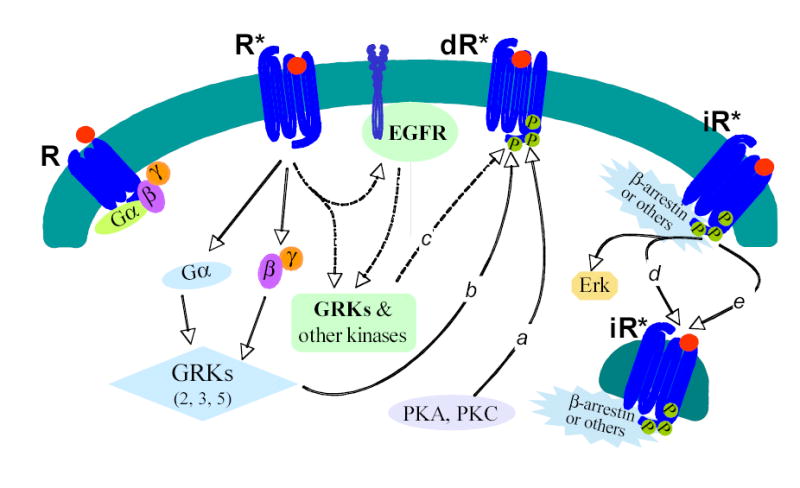Figure 7.

Internalization-triggering signals and internalization of the Ang II AT1 receptors. Label a, mechanism of heterologous internalization initiated by PKA and PKC; b, mechanism of conventional homologous internalization initiated by an activated G proteins; c, mechanism of unconventional homologous internalization initiated by G protein-independent signals; d, β-arrestin-dependent internalization (binding of β-arrestins to a GPCR is essential); e, β-arrestin-independent internalization (binding of other non-β-arrestin molecules such as caveolin or GRK2 is essential). Here R*, dR*, and iR* means activated, desensitized, and internalized AT1 receptors, respectively. In this illustration GRKs play an important role in both G protein-dependent conventional homologous internalization and G protein-independent unconventional homologous internalization. Other kinases may also be involved in the initiation of homologous internalizations of the AT1 receptor. Transactivation of EGFR is not only independent of AT1 receptor internalization but also independent of G protein activation.
